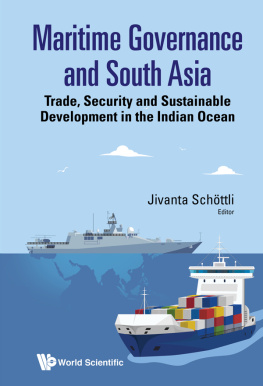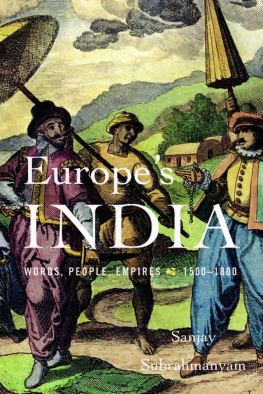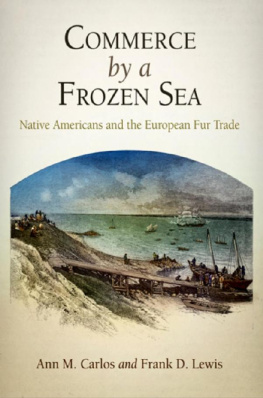
THE ROUTE TO EUROPEAN HEGEMONY
The advent of the Europeans was crucial in transforming the contours of Maritime Asia. The commercial situation in the Indian Ocean was impacted in many ways over the longue duree from the sixteenth to the eighteenth centuries. To offset the adverse balance of trade and to maximize profits, the Europeans imposed their own coercive and monopolistic systems along the existing trade routes. Systematic exploitation of economic opportunities in Asia by Europeans began with the coming of the Portuguese, followed by other European maritime powers. It culminated with Britannia ruling the Asian waters with warships and a strong merchant marine.
A study of the operational and ideological motivations that propelled the European powers activities in the Indian Ocean can help to construct a coherent interpretation of the foundations of empire that were being laid, at first insidiously and later, aggressively. The mechanism and implications of Europes sustained engagement in Intra-Asian trade, need to be analysed as an essential context to the establishment of colonial empires. India, concentric to Indian Ocean trade, became the Jewel in the Crown, its rich resources a major source of the power and pelf of the British Empire.
Ruby Maloni is former Head and Professor of the Department of History, Mumbai University. She is an alumnus of both Calcutta and Mumbai Universities. She taught Medieval Indian history at Mumbai University for more than thirty years. Her research focuses on the Indian Ocean and maritime trade, with special emphasis on the history of Gujarat. Her published works include European Merchant Capital and the Indian Economy and Surat: Port of the Mughal Empire.
First published 2021
by Routledge
2 Park Square, Milton Park, Abingdon, Oxon OX14 4RN
and by Routledge
52 Vanderbilt Avenue, New York, NY 10017
Routledge is an imprint of the Taylor & Francis Group, an informa business
2021 Ruby Maloni and Manohar Publishers & Distributors
The right of Ruby Maloni to be identified as author of this work has been asserted by her in accordance with sections 77 and 78 of the Copyright, Designs and Patents Act 1988.
All rights reserved. No part of this book may be reprinted or reproduced or utilised in any form or by any electronic, mechanical, or other means, now known or hereafter invented, including photocopying and recording, or in any information storage or retrieval system, without permission in writing from the publishers.
Trademark notice: Product or corporate names may be trademarks or registered trademarks, and are used only for identification and explanation without intent to infringe.
Print edition not for sale in South Asia (India, Sri Lanka, Nepal, Bangladesh, Pakistan or Bhutan)
British Library Cataloguing-in-Publication Data
A catalogue record for this book is available from the British Library
Library of Congress Cataloging-in-Publication Data
A catalog record for this book has been requested
ISBN: 978-0-367-75642-0 (hbk)
ISBN: 978-1-003-16333-6 (ebk)
Typeset in Adobe Garamond 11/13
by Kohli Print, Delhi 110 051
For my grandson Tej
Exemplar of Energy and Enthusiasm
Contents
1. Politico-Economic Ramifications of Europes Intra-Asian Trade
2. Indian Maritime Centres: Foreland and Hinterland
3. Indian Merchants and Institutional Structures: Resilience and Resistance
4. European Merchants at Indian Ports: Contest for Profit Maximization
5. The English East India Company: Commercial Power and Dominance
Bibliography
Index
- 1. Politico-Economic Ramifications of Europes Intra-Asian Trade
- 2. Indian Maritime Centres: Foreland and Hinterland
- 3. Indian Merchants and Institutional Structures: Resilience and Resistance
- 4. European Merchants at Indian Ports: Contest for Profit Maximization
- 5. The English East India Company: Commercial Power and Dominance
- Bibliography
- Index
- P1
- P2
- P3
- P4
- P5
- P6
- P7
- P8
- P9
- P10
- P11
- P12
Guide
- Start of Content
- Bibliography
- Index
P LATES
(between pp. 56-7)
1. Thomas Muns treatise on Mercantilism.
2. 16th century Portuguese fortress of St. Angelo at Cannanore, Kerala, in Lendas da India by Gaspar Correia, 1550-3, first published in 1858.
3. Chapel of Our Lady of the Mount, Old Goa.
4. The King of Cambay, painted by Ludovico di Varthema in the 16th century.
5. Dutch factory at Surat. Engraving in Korte Historiael Ende Journaelsche Aenteyckeninghe, by Pieter van den Broecke, Amsterdam, 1634.
6. 17th century mausolea of English East India Company factors at Surat.
7. View of Surat. Engraving by Jacob van der Schley, 1715-79.
8. English East India Companys settlement in Bombay and ships in Bombay harbour. Artists George Lambert and Samuel Scott, 1731.
(between pp. 144-5)
9. A View of Chinsura, the Dutch settlement in Bengal. Artist William Hodges, 1787.
10. Fish market in 18th century Calcutta. Etching by Frans Balthazar Solvyns, 1799.
11. Cloth merchants shop in India. Artist Basarat, 1850.
12. Zamorin of Calicut, as painted by Veloso Salgado in 1898.
13. Parsees of Bombay, wood engraving, 1878, from drawing by Emile Antoine Bayard.
14. VOC shipyard in Amsterdam. Engraving by Mulder, 1694.
15. Dutch imperial imagery by Johan Braakensiek, 1916.
16. Joseph Francois Dupleix, in A Popular History of France by Francois Guizot, 1869.
(between pp. 208-9)
17. Sir Thomas Roe at Jahangirs Court. Artist Bichitr, 1615-18.
18. Sir Thomas Roe. Detail in painting of Jahangirs Court.
19. Old East India House, London. From a late 17th century Dutch print.
20. Leadenhall Street frontage of East India House, London. Engraving by T. Simpson, 1766.
21. Statue of Robert Clive at Whitehall, London. Sculptor John Tweed, 1912.
22. Portrait of Robert Clive. Artist Nathaniel Dance, post-1773.
23. Emperor Shah Alam II reviewing East India Company troops at Allahabad. Artist Tilly Kettle, 1781.
M APS
(at the end)
1. Major Ports of the Indian Ocean: 16th-18th Centuries
2. Major Ports of India: 16th-18th Centuries
(Cartography: Faiz Habib, Centre of Advanced Study in History, Aligarh Muslim University.)
The advent of Europeans was crucial in transforming the contours of Maritime Asia. The commercial situation in the Indian Ocean was impacted in many ways over the longue duree of the sixteenth to the eighteenth centuries. To offset the adverse balance of trade and to maximize profits, the Europeans imposed their own coercive and monopolistic systems along existing trade routes, some long established and some newly forged. Systematic exploitation of economic opportunities in Asia by Europeans began with the coming of the Portuguese, followed by other European maritime powers. It culminated with Britannia ruling the waves of Asian waters with warships and a strong merchant marine, and Britain becoming a global hegemonic power.









